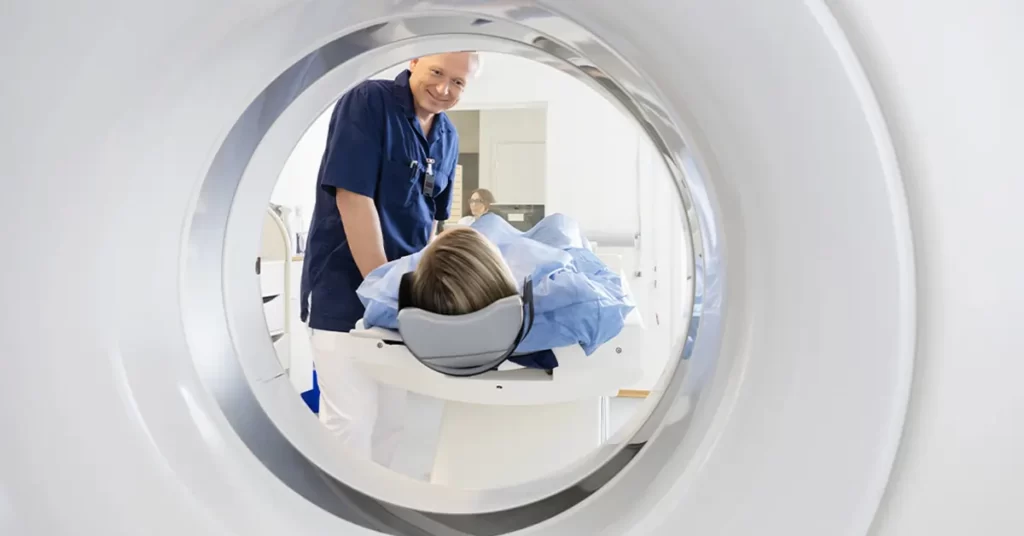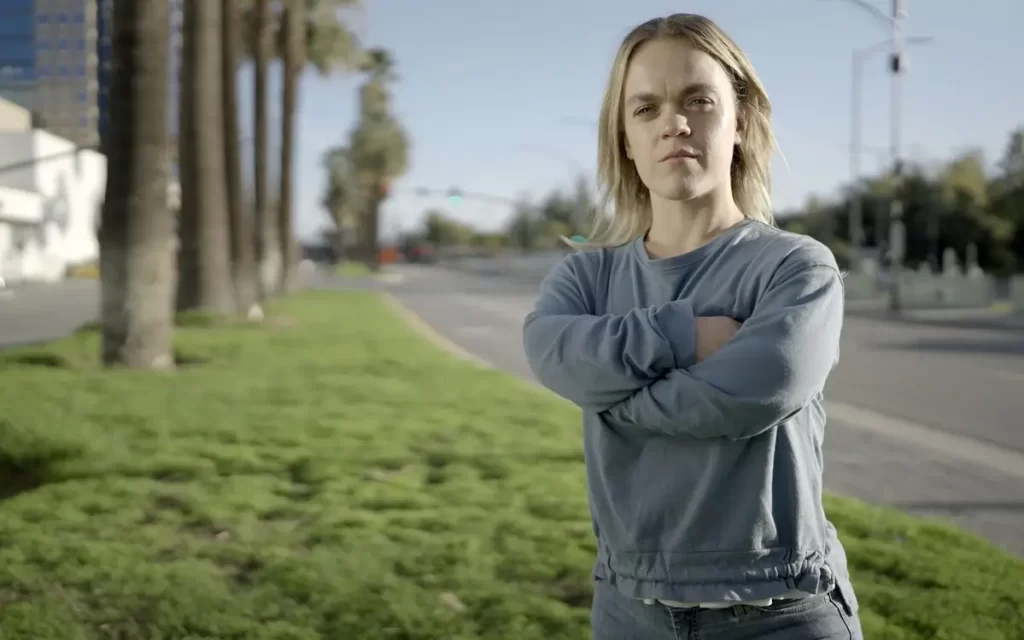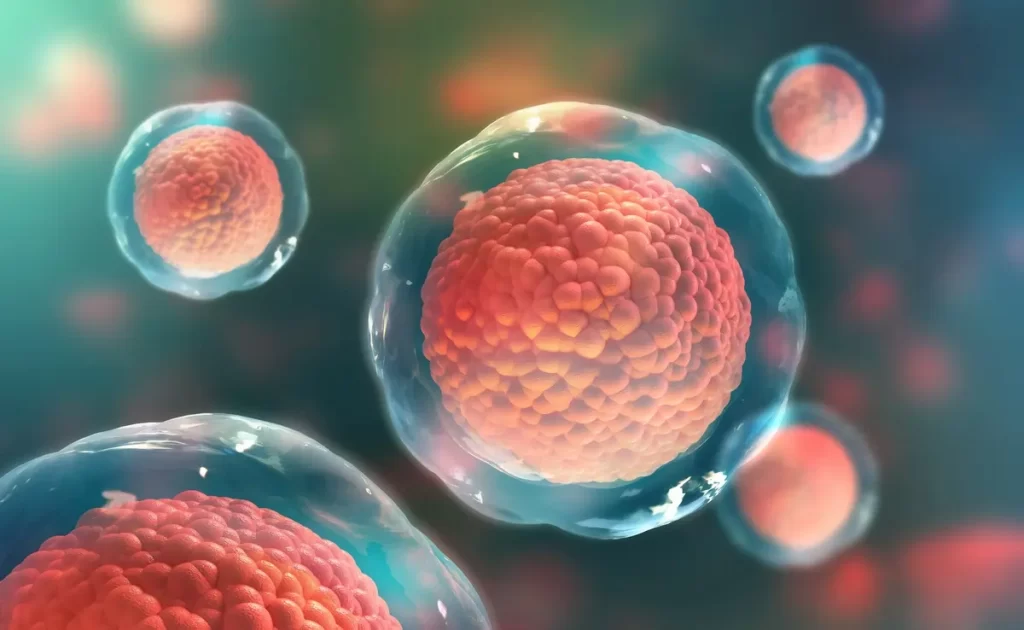CT Scan (Computed Tomography)
A CT scan is a helpful diagnostic tool for identifying illnesses and injuries. It creates a 3D image of the soft tissues and bones using a succession of X-rays and a computer. Your healthcare professional can diagnose issues using a noninvasive, painless procedure called a CT scan. In a hospital or imaging facility, you might receive a CT scan.

What is a CT scan?
Computed tomography, usually known as a CT-scan, is a technique used by medical experts to analyze inside body structures. A CT scan creates images of a cross-section of your body using X-rays and technology. In order for medical professionals to observe your body in amazing detail, the device takes photographs that reveal very tiny “slices” of your bones, muscles, organs, and blood arteries.
A fixed tube is used by conventional X-ray devices to direct radiation at a particular location. Different tissues absorb X-rays in various degrees as they move through the body. Compared to other tissues, those with a higher density produce whiter images on the film’s black background. X-rays create 2D pictures. CT-scans circulate the X-ray 360 degrees around you inside a doughnut-shaped tube. The information obtained offers a thorough 3D perspective of the interior of your body.
Are a CT scan and CAT scan the same thing?
The same imaging examination is referred to as a CT-scan and a CAT scan. Computed axial tomography is referred to as a CAT scan.
What is a CT scan with contrast?
Your scan may occasionally include a contrast agent. This contrast agent, often known as a dye, enhances the photographs by emphasizing particular features. Depending on the type of CT scan and the purpose of the scan, your healthcare professional may have you drink a particular liquid containing the contrast agent, administer the contrast through IV, or do both. Over the course of the following 24 hours, the contrast agent is expelled from your body through your urine, at first quickly and then more gradually.
How do I prepare for a CT scan?
You’ll receive advice from your doctor on how to get ready for your CT-scan. You should pay attention to the following on the exam day:
Depending on the directions given by your healthcare practitioner, you should aim to come early. The testing process runs more smoothly if you arrive early.
Diet: Give yourself four hours before your exam to eat and drink nothing.
Medication: Find out from your doctor whether you should take your regular medications prior to the CT scan.
Comfort: You ought to dress comfortably. Before the exam, you might need to change into a gown and take off your watch, jewelry, and any removable piercings. You might also need to take out your hearing aids and dentures. Metal objects and zippers can hinder the scan.
Your healthcare practitioner can give you some specific preparation instructions if your CT-scan utilizes dye or contrast:
- Before your scheduled CT scan, you might need a blood test. The blood test will guarantee that the doctor uses the proper dye.
- Dietary restrictions: For the four hours before to your CT scan, you must be careful what you eat and drink. Having only clear liquids helps you avoid feeling sick after receiving contrast dye. Broth, tea, black coffee, strained fruit juices, plain gelatin, and soft beverages like ginger ale are typically acceptable.
- Medication for allergies: If you have an allergy to the iodine-containing contrast agent used in CT-scans, you might need to take a steroid the night before and the morning of the treatment, as well as an antihistamine like Benadryl, before the exam. If necessary, make sure to check with your doctor and have them order these prescriptions for you. MRI and CT-contrast chemicals are different from one another; if you are allergic to one, you are not necessarily allergic to the other.
- The oral contrast preparation solution should be consumed as directed by your technician or nurse.
What happens during the test?
You will recline on a table on your back to take the test (like a bed). A medical professional may intravenously administer the contrast dye if your test calls for it (into your vein). This dye may give you a flushed appearance or leave you with a metallic aftertaste.
When the scan begins:
- Slowly, the bed slides into the scanner’s doughnut configuration. You must now maintain as much stillness as you can because moving could result in hazy photos.
- The region that the healthcare provider needs to see is captured on camera by the scanner. A CT scan is silent, in contrast to an MRI scan.
- The table moves back out of the scanner after the examination is over.
How long does the test take?
For a CT scan, you should typically allow an hour. Such time is primarily used for preparation. The actual scan only takes ten to thirty minutes, max. Normally, you can resume your activities as soon as a healthcare professional says it is okay to do so. This usually happens once the scan is finished and clear images have been confirmed.
How long does it take to get results?
The scan normally takes 24 hours to produce the results. An expert in reading and interpreting CT scans and other radiologic pictures known as a radiologist will evaluate your scan and create a report that explains the results. Healthcare practitioners frequently receive results within an hour in an emergency situation, such as a hospital or emergency department.
You will either schedule another visit or get a call after the results have been evaluated by a radiologist and your healthcare practitioner. The findings will be discussed with you by your doctor.
What does a CT-scan show?
A CT scan will be requested by your doctor in order to aid in the diagnosis of your condition. Providers can thoroughly inspect blood vessels, abnormal growths, bones, organs, and other soft tissues with the scan. Among the things a CT-scan can detect are:
- benign (noncancerous) tumors and specific cancer types.
- Fractures (broken bones) (broken bones).
- heart illness.
- clots of blood.
- Disorders of the bowel (blockages, Crohn’s disease).
- illnesses or damage to the brain and spinal cord.
- inside bleeding
On X-rays, tissues and organs can also be seen by medical professionals. Yet, body components seem to overlap on X-rays, making it challenging to see everything. For a clearer look, the CT scan reveals the gaps between organs.
Are CT scans safe?
CT-scans are usually regarded as safe by medical professionals. Children’s CT scans are secure as well. Your CT technician might employ equipment designed with children in mind to minimize the radiation exposure to them.
Like other diagnostic procedures, CT-scans create the image using a small amount of ionizing radiation. Among the dangers connected to CT scans are:
- Cancer risk: All radiation-based imaging procedures, like X-rays, slightly raise your risk of getting cancer. The difference is too slight to accurately measure.
- Rarely, persons may experience a mild or severe allergic reaction to the contrast agent.
Like other diagnostic procedures, CT scans create the image using a small amount of ionizing radiation. Among the dangers connected to CT scans are:
If you have questions about the health risks of CT scans, talk to your healthcare professional. They will explore your concerns and help you make an informed decision about the scan.
Can I have a CT scan if I’m pregnant?
Inform the CT technician if you are or think you might be pregnant. The growing fetus may be exposed to radiation during pelvic and abdominal CT scans, but not to an extent that would be harmful. The fetus is not in any danger from CT scans in other sections of the body.



